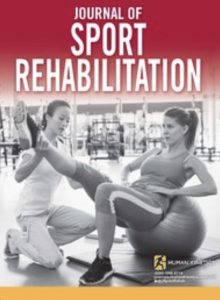Publications

The Acute Effects of Different Intensity Whole-Body Vibration Exposure on Muscle Tone and Strength of the Lower Legs, and Hamstring Flexibility: A Pilot Study
Authors: Tülay Çevik Saldıran, Emine Atıcı, Derya Azim Rezaei, Özgül Öztürk, Burcu Uslu, Burcu Ateş Özcan, Begüm Okudan
Journal: Journal of Sport Rehabilitation - May 2020, Volume 3, Issue 2, Pages 235–241 (DOI: 10.1123/jsr.2019-0408)
-
Field & Applications:
- Sport
- Treatment evaluation
- Balance / Postural control
Context: The research on the change in properties of the lower leg muscles by different intensity sinusoidal vertical whole-body vibration (SV-WBV) exposures has not yet been investigated.
Objective: The purpose of this study was to determine effect of a 20-minute different intensity SV-WBV application to the ankle plantar flexor and dorsiflexor muscles properties and hamstring flexibility.
Design: Prospective preintervention–postintervention design. Setting: Physiotherapy department. Participants: A total of 50 recreationally active college-aged individuals with no history of a lower leg injury volunteered. Interventions: The SV-WBV was applied throughout the session with an amplitude of 2 to 4 mm and a frequency of 25 Hz in moderate-intensity vibration group and 40 Hz in a vigorous-intensity vibration group.
Measurements: The gastrocnemius and tibialis anterior muscle tone was assessed with MyotonPRO, and the strength evaluation was made on the same lower leg muscles using hand-held dynamometer. The sit and reach test was used for the lower leg flexibility evaluation.
Results: The gastrocnemius muscle tone decreased on the right side (d=0.643, P=.01) and increased on the left (d = 0.593, P=.04) when vigorous-intensity vibration was applied. Bilateral gastrocnemius muscle strength did not change in both groups (P > .05). Without differences between groups, bilateral tibialis anterior muscle strength increased in both groups (P < .01). Bilateral gastrocnemius and tibialis anterior muscle tone did not change in the moderate-intensity vibration group (P > .05). Flexibility increased in both groups (P < .01); however, there was no statistically significant difference between the groups (d = 0.169, P = .55).
Conclusions: According to study results, if SV-WBV is to be used in hamstring flexibility or ankle dorsiflexor muscle strengthening, both vibration exposures should be preferred. Different vibration programs could be proposed to increase ankle plantar flexor muscle strength in the acute results. Vigorous-intensity vibration exposure is effective in altering ankle plantar flexor muscle tone, but it is important to be aware of the differences between the lower legs.
Keywords: lower leg muscle, muscle strength, acceleration, MyotonPRO
Consequently, if SV-WBV is to be used in hamstring flexibility or tibialis anterior muscle strengthening, both vibration exposure should be preferred. Regional differences are observed in the lower legs after different intensity WBV applications in the acute responses. Both WBV programs increased the calf anterior muscle strength and improved the flexibility in the muscles of the back of the thigh. And also only the vigorous vibration alters the muscle tone of calf posterior. Changes in muscle strength and muscle tone were independent of each other, unparalleled. Vigorous-intensity vibration exposure is an effective method for altering plantar flexors muscle tone, but it is important to be aware of the differences between lower legs. Moderate- or vigorous-intensity vibration exposure would be preferred for tibialis anterior muscle strengthening. On the standardization of the WBV training methodology, we could say that these study results bring a different perspective to the research in the literature.


